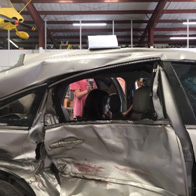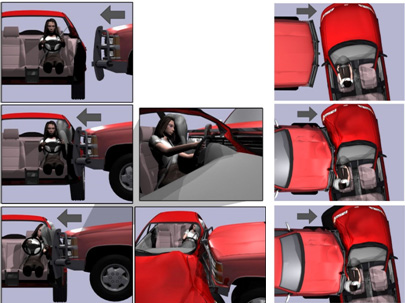PRACTICE AREAS
PRODUCTS LIABILITYS - SIDE-IMPACT AIR BAGS

|
Alejandra Ruiz, a properly seatbelted child in the right rear passenger seat of the 2006 Chevrolet Impala, received a traumatic and fatal head injury in a side-impact collision when the “roof rail” side airbag failed to properly deploy in a common “T-Bone” type intersection side impact collision. A properly deployed side impact airbag would have provided a safety barrier between Miss Ruiz’s head and the deforming vehicle side door structures, preventing the fatal head trauma she experienced. Without this roof rail airbag deployment, there was nothing to prevent what was otherwise a preventable permanent and fatal head injury. Similarly, Dereck Lopez, an 18 year old aspiring Olympian, was fatally injured in a side-impact collision with a drunk driver. Miss Lopez’s head went out the driver’s side window and struck the bumper guard of the truck that t-boned her. She suffered severe and traumatic head injuries. Tests proved that had her car, a Chevy Cavalier, had side impact airbags installed, her death would have been prevented. According to the IIHS, side-impact crashes killed about 8,225 Americans in 2007. Side-impact air bags (SABs) are inflatable devices designed to help protect the head and/or chest in the event of a serious side-impact crash. SABs inflate in a fraction of a second and are designed to help keep your head and/or chest from being hit by hard objects both inside and outside your vehicle in serious side-impact crashes. Sensors determine whether a crash is severe enough to inflate the SABs. Unlike frontal air bags, some of the side curtain air bags may stay inflated for several seconds during a crash for additional protection in the event of a rollover.
Vehicles can be equipped with both front and side air bags. Frontal air bags have been standard equipment in all passenger cars since model year 1998 and all SUV’s, pickups and vans since model year 1999. SABs are being offered as standard or optional equipment on many new passenger vehicles depending upon the model year.
|


